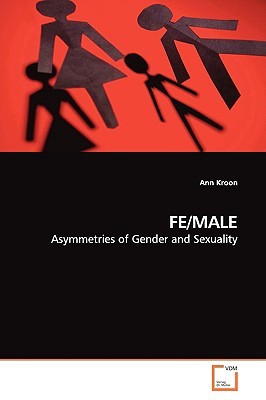
- We will send in 10–14 business days.
- Author: Ann Kroon
- Publisher: VDM Verlag
- ISBN-10: 3639135474
- ISBN-13: 9783639135473
- Format: 15.2 x 22.9 x 1.6 cm, softcover
- Language: English
- SAVE -10% with code: EXTRA
Reviews
Description
The analysis in this book elicits and "teases out" contemporary logics of gender and sexuality from modern psychiatric texts on transsexualism. There is an explicit focus on found asymmetries of gender and sexuality with regard to biological females vs. males. Two amalgam psychiatric statements are particularly investigated. Firstly, that of the female-to male transsexual having an "easier" transition to man, than the male-to female transsexual to woman; and secondly, that of FTMs being of homosexual orientation before transition, whereas MTFs are seen as having backgrounds with more sexual variety. These depictions are analysed in connection with the construction of the fe/male body, concluding an over- all symbolic logic of "the male accommodates the female, but the female does not accommodate the male". It is further suggested that this reveals a phallic core operating within still vivid active/passive paradigms being used to construct masculinity and femininity. This theoretical work will be of interdisciplinary interest to scholars and others working within feminist, women's, gender, queer, transgender and masculinity studies.
EXTRA 10 % discount with code: EXTRA
The promotion ends in 16d.21:52:01
The discount code is valid when purchasing from 10 €. Discounts do not stack.
- Author: Ann Kroon
- Publisher: VDM Verlag
- ISBN-10: 3639135474
- ISBN-13: 9783639135473
- Format: 15.2 x 22.9 x 1.6 cm, softcover
- Language: English English
The analysis in this book elicits and "teases out" contemporary logics of gender and sexuality from modern psychiatric texts on transsexualism. There is an explicit focus on found asymmetries of gender and sexuality with regard to biological females vs. males. Two amalgam psychiatric statements are particularly investigated. Firstly, that of the female-to male transsexual having an "easier" transition to man, than the male-to female transsexual to woman; and secondly, that of FTMs being of homosexual orientation before transition, whereas MTFs are seen as having backgrounds with more sexual variety. These depictions are analysed in connection with the construction of the fe/male body, concluding an over- all symbolic logic of "the male accommodates the female, but the female does not accommodate the male". It is further suggested that this reveals a phallic core operating within still vivid active/passive paradigms being used to construct masculinity and femininity. This theoretical work will be of interdisciplinary interest to scholars and others working within feminist, women's, gender, queer, transgender and masculinity studies.


Reviews